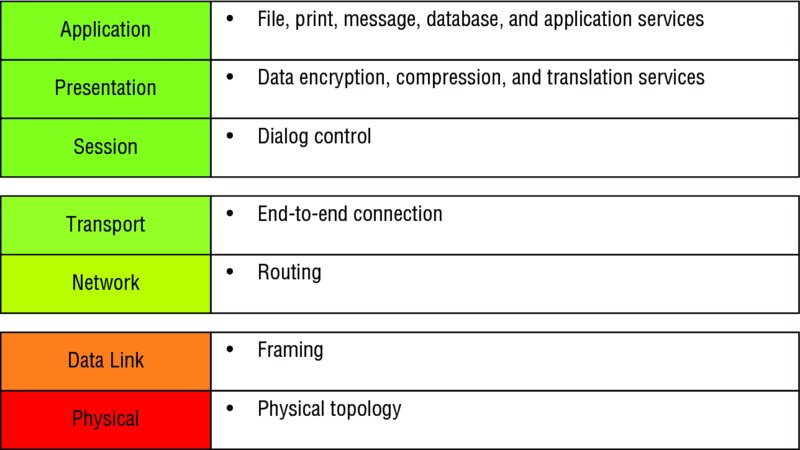The OSI Reference Model
One of the greatest functions of the OSI specifications is to assist in data transfer between disparate hosts regardless if they’re Unix, Windows, or Mac based.
But keep in mind that the OSI model isn’t a physical model; it’s a conceptual and comprehensive yet fluid set of guidelines, which application developers utilize to create and implement applications that run on a network. It also provides a framework for creating and implementing networking standards, devices, and internetworking schemes. The OSI model has seven layers:
- Application (Layer 7)
- Presentation (Layer 6)
- Session (Layer 5)
- Transport (Layer 4)
- Network (Layer 3)
- Data Link (Layer 2)
- Physical (Layer 1)
Figure 2.1 summarizes the functions that occur at each layer of the OSI model. With this in mind, you’re ready to delve into what takes place at each layer in detail.
Figure 2.1 Layer functions

 |
Some people like to use the mnemonic Please Do Not Throw Sausage... |
























































